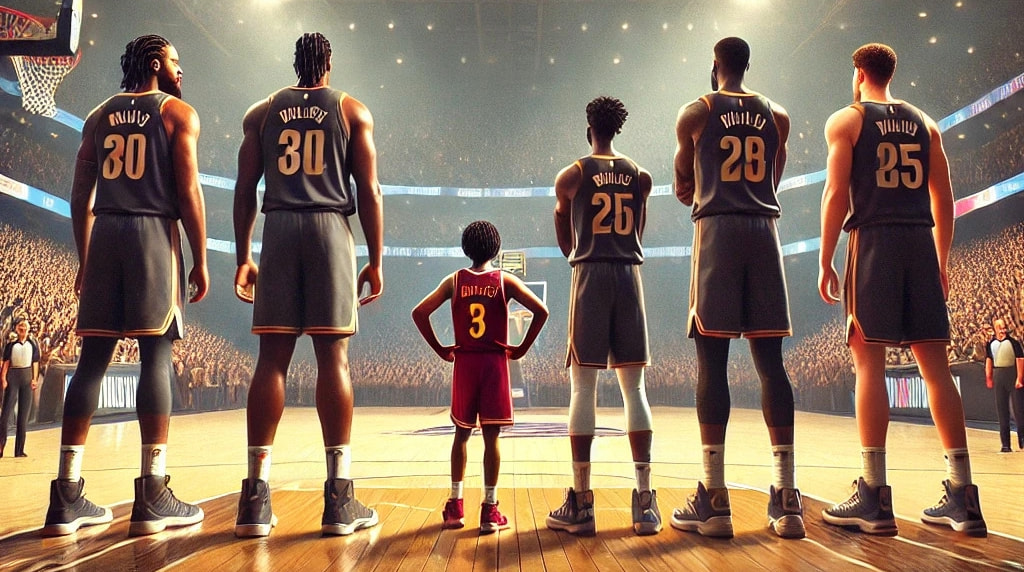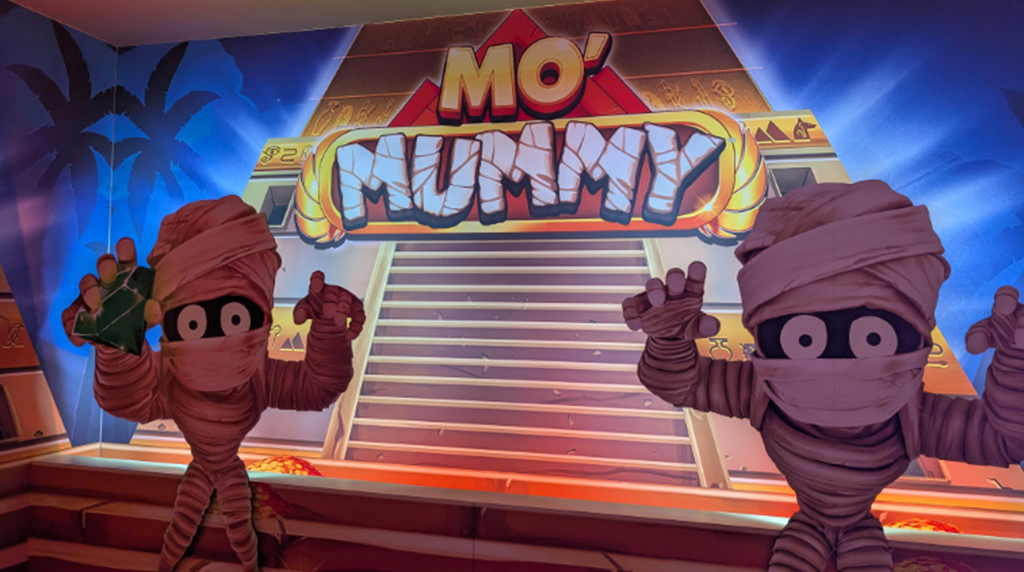Here are the NBA’s Shortest Players Ever, Including Spud Webb
Fans are conditioned to look for the tall guys when they go to an NBA game. But sometimes you have to look down, way down to find the shortest NBA players. Professional basketball has welcomed several little athletes who made a big impact though.

Short NBA players are not uncommon for the sport. © Image designed by Dan Holmes of Boone Digital
The game of basketball favors the giants. From towering centers like Wilt Chamberlain and Shaquille O’Neal to lengthy wingmen like Kevin Durant and Giannis Antetokounmpo, the NBA’s landscape has historically been dominated by height.
Yet throughout the league’s illustrious history, several diminutive athletes have defied the odds, etching their legacies into NBA lore. This exploration honors these remarkable “wee” individuals, examining the NBA shortest players, their achievements, and their enduring impact.
Historical Overview: Minimum Height for NBA Players
While no official minimum height for NBA participation exists, athletes under six feet remain anomalies. Let’s journey through some of the shortest players in NBA history who’ve dazzled despite their stature:
- Muggsy Bogues (5’3″)
- Earl Boykins (5’5″)
- Spud Webb (5’7″)
- Keith Jennings (5’7″)
- Mel Hirsch (5’6″)
- Calvin Murphy (5’9″)
- Isaiah Thomas (5’9″)
- Nate Robinson (5’9″)
At 5-foot-3, Muggsy Bogues remains the NBA shortest player ever. His astonishing quickness, vision, and unyielding defence made him a key figure for the Charlotte Hornets in the 1990s. Teammate Larry Johnson famously remarked, “Playing with Muggsy is like having a sixth sense out there. Height doesn’t matter when you can see plays before they develop.”
Spud Webb, just four inches taller than Bogues, stunned the basketball world in 1986 by winning the Slam Dunk Contest. As Atlanta Hawks teammate Dominique Wilkins commented, Webb’s elevation and agility belied his size, “You don’t measure heart with a tape measure. Spud has the heart of a champion.”
Earl Boykins’ stature, at 5-foot-5, similarly defied convention. His 13-year career highlighted remarkable perseverance, as he scored nearly 6,000 points in the NBA.
Average NBA Height by Decade
To understand how remarkable these athletes truly are, consider the evolving average NBA player height over the decades:
- 1940s: 6’3″
- 1950s: 6’4″
- 1960s: 6’5″
- 1970s: 6’6″
- 1980s: 6’7″
- 1990s: 6’7″
- 2000s: 6’7.5″
- 2010s: 6’7″
- 2020s: 6’6.75″
As heights increased over time, players under 6 feet continually found ways to adapt and thrive, illustrating that determination often trumps physical limitations.
Hall of Fame Players: Mighty Between 5’10” and 6’0″
The Hall of Fame roster includes legendary players who, though below average NBA height, elevated their teams profoundly. Calvin Murphy, at 5-foot-9, exemplifies this. Murphy, inducted into the Hall in 1993, is celebrated as one of the league’s most reliable shooters, accumulating over 17,000 points.
Isiah Thomas, the original Detroit Pistons maestro, was an iconic leader at just 6 feet tall. Thomas orchestrated the “Bad Boys” Pistons to two NBA Championships in 1989 and 1990, illustrating that strategic intelligence can overshadow mere physical presence.
Allen Iverson, the relentless scorer and cultural icon at 6-foot, redefined the image of the NBA athlete. Iverson, known for his fearless approach, won four scoring titles and the 2001 MVP award, famously declaring, “I play every game like it’s my last.”
Chris Paul, another 6-foot legend, continues to dazzle fans. A cerebral floor general, Paul’s ability to dominate games despite his stature has garnered him perennial All-Star selections, demonstrating how craftiness and skill can dictate games.
Nate Robinson: The Toughest of the Small
Nate Robinson, a muscular 5-foot-9 guard, might claim the title of the toughest small player in NBA history. Known for his fearless drives to the basket and explosive athleticism, Robinson’s career included highlight moments, notably winning the Slam Dunk Contest a record three times. Former coach Doc Rivers encapsulated Robinson’s essence succinctly: “Nate’s toughness isn’t measured in inches, it’s measured in intensity.”
Notable Moments by Short NBA Players
- Muggsy Bogues: 24 assists against Milwaukee Bucks in 1989.
- Spud Webb: Winning the 1986 Slam Dunk Contest.
- Calvin Murphy: Scoring 57 points against the New Jersey Nets in 1978.
- Isaiah Thomas: Averaging 28.9 points per game in 2016-17 for the Celtics, finishing 5th in MVP voting.
- Nate Robinson: 34-point performance leading Chicago Bulls over Brooklyn Nets in triple overtime, 2013 playoffs.
Slam Dunk Success Among NBA’s Shortest
The Slam Dunk Contest has particularly highlighted smaller athletes. Spud Webb, in 1986, became an instant legend, showing fans that explosive athleticism and creativity could overcome stature. Nate Robinson followed suit, captivating crowds with his daring leaps and powerful dunks, underscoring the spectacle of underdog triumph.
Here’s a video showing the pixie Webb leaping as if he had springs in his legs during the 1986 Slam Dunk Contest.
Steph Curry Effect: Long-Range Shooting from Short-Range Player
Steph Curry has revolutionized basketball, not by imposing physical dominance but by reshaping the very essence of the game’s strategy and style.
At just 6-foot-2, Curry is relatively short by NBA standards. Yet, his unprecedented ability to shoot from long range with startling consistency has transformed basketball’s landscape, inspiring a new generation of players who don’t rely on towering height or unmatched athleticism.
Curry’s impact extends beyond mere statistics or accolades, it’s about changing perceptions. Historically, basketball has favored height, strength, and vertical prowess.
Centers and power forwards, men who can physically dominate near the basket, were long considered essential to success. Curry, however, took the NBA by storm with his three-point shooting, demonstrating that a player could profoundly influence a game from well beyond the paint.
Before Curry’s rise, long-range shooting was considered an occasional weapon, not a central strategy. Some people consider it even as gambling at legal online casinos.
Teams traditionally worked for high-percentage shots closer to the basket. Curry’s effectiveness at hitting shots from distances previously considered absurd has altered offensive philosophies across the league.
NBA Coaches now emphasize quick shooting from beyond the arc early in the shot clock, prioritizing efficiency and spacing over brute force. This style has given smaller players greater opportunities, as height and physical dominance are less critical when offensive success hinges on shooting skills and speed.
This Curry-inspired evolution has influenced basketball at every level, from high school gyms to college arenas, reshaping the developmental pathways for young players.
Shorter players who once might have abandoned dreams of professional basketball now see a realistic pathway to success. By mastering shooting, dribbling, and agility, they follow in Curry’s footsteps, redefining what it means to be valuable on the court.
While this democratization of basketball skill could be viewed positively, some purists argue that it diminishes traditional roles and reduces basketball to a series of jump shots, potentially sacrificing the nuance and diversity that made the game historically compelling.
The NBA has adapted rules that, intentionally or otherwise, have increasingly favored the smaller, more agile player.
The league’s introduction and refinement of replay reviews, particularly for screens and picks, has limited aggressive physical play and thus diminished the advantage of larger, stronger players.
Zone defenses, once banned, are now allowed, enabling teams to protect smaller defenders by using spacing and strategic help defense rather than relying solely on one-on-one matchups against physically dominant opponents.
Consequently, the strategic emphasis has shifted toward team movement, passing, and perimeter shooting, further supporting Curry’s style.
Curry’s game has led coaches to embrace tactics like shooting early in possessions and emphasizing spacing to open up the court.
This tactical shift reduces the importance of height, as smaller players can thrive in open, fast-paced offenses that maximize shooting accuracy and quickness rather than raw power or verticality.
Shorter guards previously marginalized by traditional basketball conventions now have central roles, influencing games significantly through shooting and strategic positioning.
However, Curry’s transformative influence isn’t universally praised. Critics suggest that the “Curry era” might inadvertently promote a narrower style of play, potentially sacrificing the variety and balance that characterized earlier NBA eras.
When offenses rely too heavily on three-pointers, games can become overly predictable and less engaging, a concern echoed by fans’ nostalgic for post play and interior dominance.
Yet, despite these critiques, Curry’s legacy remains undeniably profound. His ability to thrive at his size, through shooting—a skill largely independent of physical stature—has forever altered basketball’s trajectory.
Curry hasn’t just changed how players approach shooting; he’s reshaped the very possibilities of who can dominate basketball, proving definitively that height isn’t the ultimate determinant of greatness on the hardwood.
Impact of Not-Too-Tall NBA Players
These NBA shortest players continually remind us that the minimum height for NBA success is not physical but mental and emotional. Their tenacity reshapes our understanding of basketball, breaking barriers and inspiring generations of aspiring athletes.
Legendary coach John Wooden once articulated, “It’s not the size of the man, but the size of the fight in the man.” The NBA’s shortest players embody this philosophy, proving endlessly that determination and grit carve out legacies far greater than height alone.
 7 Politically Incorrect Slots for the Connoisseur Who’s Seen It All
7 Politically Incorrect Slots for the Connoisseur Who’s Seen It All
 Casino Payment Delay Red Flags: When Waiting Is a Concern
Casino Payment Delay Red Flags: When Waiting Is a Concern
 US Оnline Casinos Turn to Celebrities to Attract Consumers
US Оnline Casinos Turn to Celebrities to Attract Consumers
 Inside G2E Las Vegas 2025, from Prediction Markets to Marble Runs
Inside G2E Las Vegas 2025, from Prediction Markets to Marble Runs